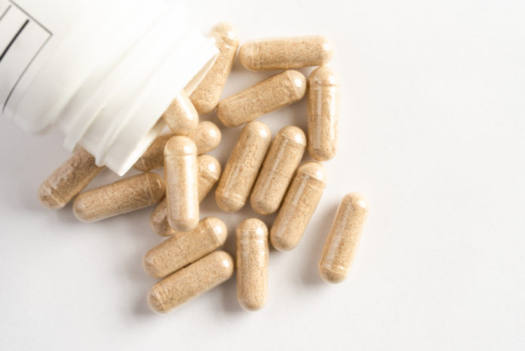Saw palmetto has long been a bestselling herbal extract for men’s health for several decades. The historical use of saw palmetto includes Native Americans for the treatment of prostate and urinary problems. This use of saw palmetto was later adopted by American settlers and Europeans.
Today saw palmetto is recommended commonly by German urologists and American naturopathic doctors, herbalists, nutritionists, and holistic medical doctors.
Saw palmetto is mainly used for prostate enlargement, also known as benign prostatic hyperplasia (BPH). This condition is widespread in men as it affects one-third of men over the age of 50 and about 90% of men who reach 85. Symptoms of BPH may include:
- Incomplete emptying: bladder feels full even after voiding urine
- Increased frequency: need to urinate often, every hour or two
- Intermittency: the need to stop and start several times while urinating
- Urgency: sensation of needing to urinate right away
- Weak stream: a weak or feeble urinary stream
- Straining: need to push or strain to start urine flow
- Nocturia: the need to wake up at night to urinate more than two times
There is no single cause of BPH. Instead, there are likely several different causes, including genetic factors. However, one thing that researchers can agree on is that as men age, their hormone levels change, which affects prostate enlargement. Research has mainly focused on the hormones testosterone, dihydrotestosterone, progesterone, and estrogen.
Saw palmetto had been shown in several studies to reduce symptoms of mild to moderate BPH. For example, a 2018 paper conducted a saw palmetto systematic review and meta-analysis of randomized controlled trials and observational studies of men with BPH. The data included a total of 27 studies. Researchers found that saw palmetto extract reduced nocturia and improved maximum urinary flow compared to placebo. Furthermore, saw palmetto extract had a similar benefit to those of the drug tamsulosin and a 5-alpha-reductase inhibitor in relieving LUTS. There was no negative effect on sexual function or PSA levels. There was a slight decrease in prostate size (volume). The authors concluded that saw palmetto extract “appears to be an efficacious and well-tolerated therapeutic option for the long-term medical treatment of LUTS/BPH.”
The effectiveness of saw palmetto supplements can vary depending on how saw palmetto is manufactured and its concentration. In addition, I rarely prescribe saw palmetto by itself for the treatment of BPH since other well-studied herbal products also treat BPH. By using a combination of products, one can address multiple mechanisms for reducing urinary symptoms. For example, published studies show that the combination of saw palmetto and stinging nettle root extract is effective in reducing LUTS associated with BPH. In one double-blind clinical trial, the combination of 160 mg of saw palmetto and 120 mg of nettle root was evaluated in 257 elderly men with moderate or severe LUTS caused by BPH. The men were treated with this combination or a placebo for 24 weeks, which was followed by a 24-week control period, then a 48-week follow-up period in which all men received the herbal combination. Assessment at week 96 revealed that the International Prostate Symptom Score (IPSS) was reduced by 53 percent, peak and average urinary flow increased by 19 percent, and residual urine volume decreased by 44 percent in the treatment group. The remedy was very well tolerated.
Saw palmetto has multiple mechanisms that are likely responsible for reducing BPH symptoms. It has antiestrogenic effects and inhibits the conversion of testosterone into DHT in prostate tissue and intracellular binding to receptors in the prostate.
A review of studies on saw palmetto for the treatment of BPH found that it was well tolerated and not associated with serious adverse events. Also, there was no evidence of drug interactions.
For a comprehensive discussion of holistic approaches to prostate problems and men’s health, see my book available on Amazon.com, Healing The Prostate: The Best Holistic Methods To Treat The Prostate And Other Common Male-Related Conditions (Hay House).
Selected Reference
Remigio Vela-Navarrete et al., “Efficacy and Safety of a Hexanic Extract of Serenoa repens (Permixon®) for the Treatment of Lower Urinary Tract Symptoms Associated with Benign Prostatic Hyperplasia (LUTS/BPH): Systematic Review and Meta-Analysisof Randomised Controlled Trials and Observational Studies,” BJU International 122, no. 6 (2018): 1049–65, doi: 10.1111/bju.14362.
Dr. Mark Stengler is a leading Naturopathic Medical Doctor and author. He practices with his wife Dr. Angela Stengler, at the Stengler Center For Integrative Medicine in Encinitas, California (855-DOC-MARK). You can also sign up for his FREE Newsletter at Americasnaturaldoctor.com

